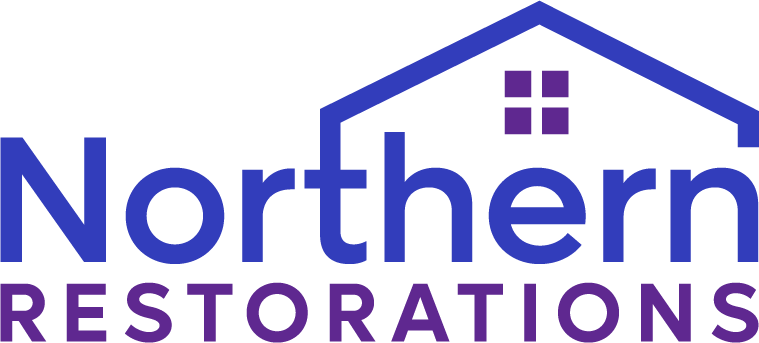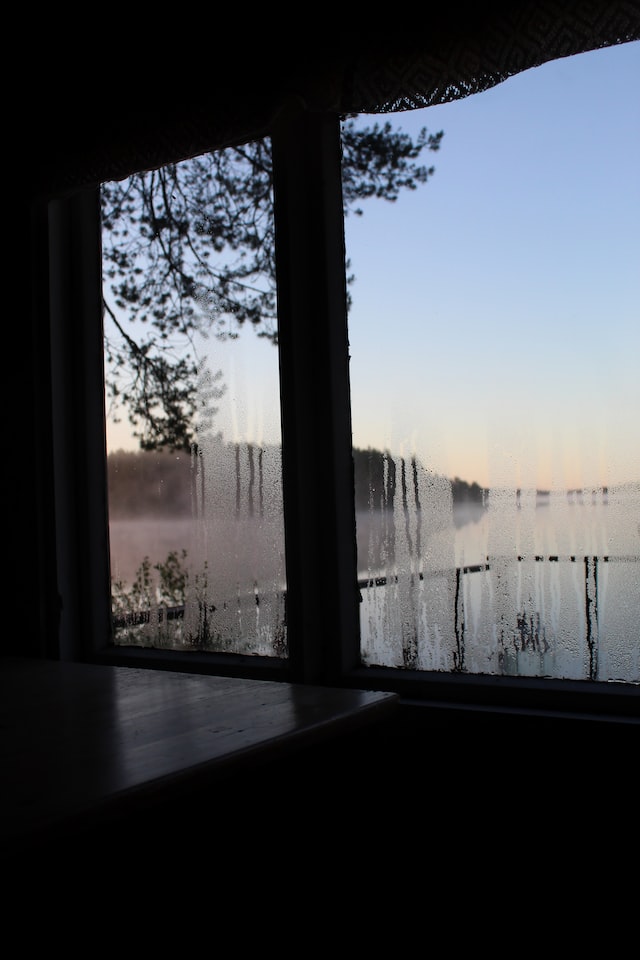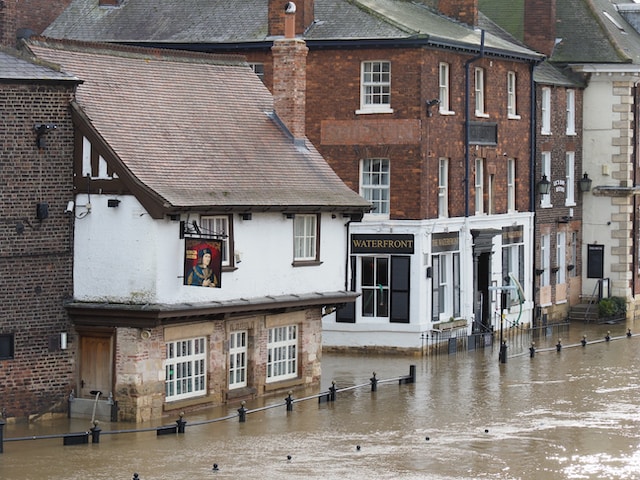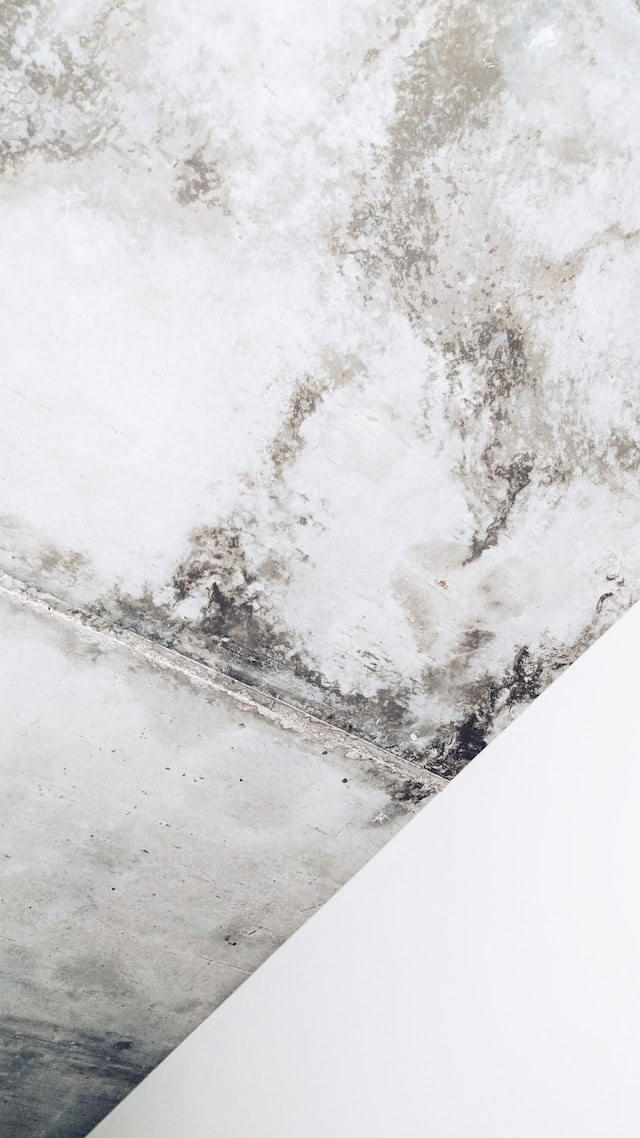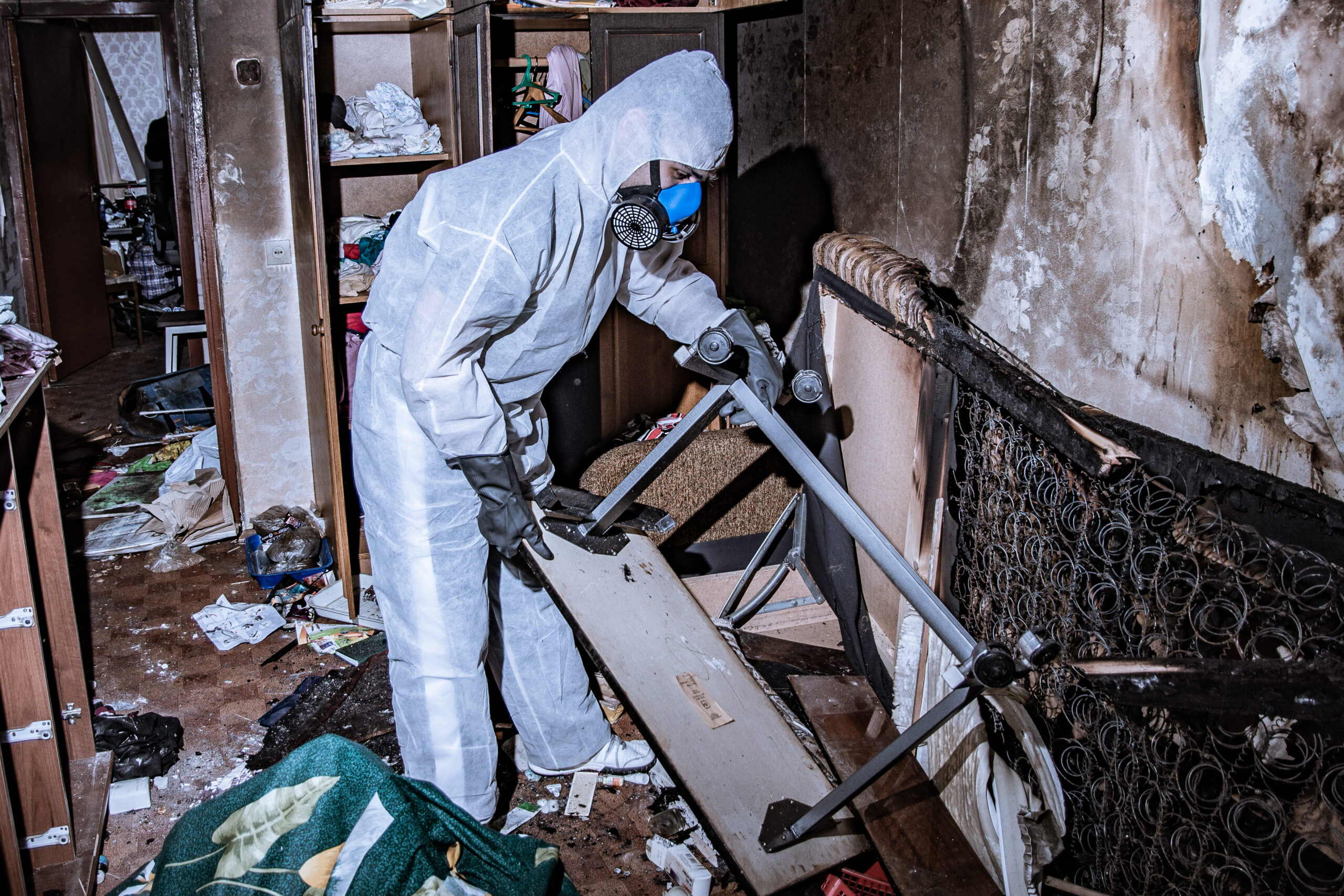Few experiences are as devastating and disheartening as the aftermath of a fire. Whether it’s a small household fire or a larger-scale disaster, the destruction left in its wake can be overwhelming. But amid the chaos and despair, one crucial phase of recovery emerges – the cleanup. This blog post, “How To Clean Up After A Fire: Essential Safety Steps,” aims to guide you through this challenging journey.
Restoring your home or property after a fire isn’t just about physical restoration; it’s also about emotional healing and the journey toward normalcy. However, cleaning up after a fire is a complex and potentially hazardous process that requires careful planning and execution.
From understanding the immediate dangers that linger in the fire’s aftermath to developing a comprehensive cleanup plan and knowing when it’s time to call in professionals, we’ll cover it all. By the end of this post, you’ll have the knowledge and resources you need to begin the journey toward recovery, rebuilding, and restoring your life after a fire. So if you’ve ever wondered how to clean up after a fire, just to be prepared, this post is for you!
Table of Contents:
- How to Clean Up After a Fire: Essential Safety Steps
- Unravelling the Mystery of Smoke Damage
- Dealing with Water Damage
- Cleaning Products and Techniques
- FAQs in Relation to How to Clean Up after a Fire
How to Clean Up After a Fire: Essential Safety Steps
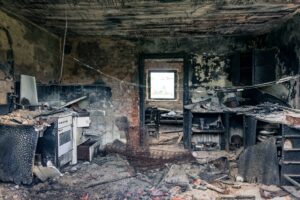
A fire can be a traumatic event, leaving you feeling overwhelmed and unsure of what steps to take next. But don’t worry, the challenges faced in these situations are actually pretty straightforward to handle when you know what actions need to be taken.
So let’s break it down for you – here’s how to clean up after a fire.
1. Ensuring Safety Post-Fire
The most important thing is not entering your property until it has been given the all-clear by professional firefighters. These experts have undergone rigorous training and possess state-of-the-art equipment needed for detecting any potential hazards lurking within your premises.
The tricky part? Fires often cause hidden damage which you can’t immediately see. It could involve electrical wiring issues or compromised wall supports and foundations – these pose serious health risks associated with fire damage if left unattended.
Safety Measures Checklist:
- Contacting firefighters before re-entry.
- Their expertise ensures thorough inspection of possible dangers.
- Hiring certified professionals for detailed examination.
- Taking note of unseen damages (wiring, structures, etc.) during this process.
- This mitigates further harm while preparing the site for restoration works.
- This is also required for insurance purposes.
Once confirmed safe, then comes assessing and documenting inflicted damages.
2. Damage Assessment and Documentation
“But how do I assess my losses accurately?” Here’s how: start by capturing photographs showcasing every room affected by the fire – this visual evidence will prove invaluable when dealing with insurance claims later on.
Create a comprehensive inventory detailing each item damaged or destroyed along with their estimated value where feasible – believe me; this information makes filing an exhaustive claim easier while also aiding recovery costs tied to replacing or repairing these items.
After a fire, safety is paramount. Wait for the all-clear from professional firefighters before re-entering your property and consider hiring experts to identify any hidden damage like faulty wiring or structural issues. Once safe, document all damages with photographs and detailed inventories – these will be invaluable when filing insurance claims.
Unravelling the Mystery of Smoke Damage
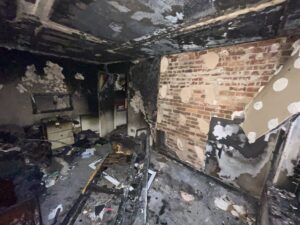
Fire’s aftermath isn’t just charred items and ash. There’s a less visible, but equally destructive aspect – smoke damage. The effects of smoke on surfaces can be both insidious and extensive, infiltrating various materials in your home or commercial property.
“Understanding how different materials react to smoke is key to effective restoration.”
The Invisible Impact: Understanding Smoke Damage
You see, porous substances like fabric and wood act as sponges for smoke particles. This leads not only to staining but also lingering odours that seem almost impossible to eradicate.
In contrast, non-porous materials such as metal may show discolouration yet don’t hold smells for long periods. Regardless of the surface type affected by smoke damage though, it’s crucial you clean smoke damage. We would always recommend using a professional smoke damage team for this cleanup process as it requires a lot of deep cleaning!
Sweeping Away Soot: Techniques for Removing Soot and Smoke Residue
If you’re dealing with soot – that stubborn fine black powder left behind after a fire – here are some proven techniques for removing soot stains from walls and other surfaces:
- Create a solution of dishwashing liquid, trisodium phosphate (TSP), bleach and warm water for cleaning.
- Gently wipe down hard surfaces starting from top-to-bottom with this mixture applied onto a sponge or cloth until no residue remains.
- Rinse off any remaining detergent thoroughly before drying completely.
When dealing with the aftermath of a fire, it’s not just charred remains you’re tackling. Smoke damage can be an invisible foe, infiltrating porous and non-porous materials alike. It’s crucial to understand how different substances react to smoke for effective restoration. Techniques like using a cleaning solution for soot stains or vacuuming soft furnishings can help reclaim your property.
Dealing with Water Damage
One thing that many people forget when they think about how to clean up after a fire is that you don’t just have to deal with fire damage after a blaze – how about all that water firefighters drench a fire in to put it out? In fact, the water damage can be just as destructive as the flames themselves. Let’s explore how to effectively manage this dual threat.
Taking Stock: Assessing the Extent of Water Damage
As with any challenge, knowledge is key. When it comes to restoring your property after a fire, it’s crucial to determine the visible and hidden water damage. It is essential to inspect even the most hard-to-reach places, like under flooring or inside walls, which if neglected can result in major structural issues and mould growth over time.
Our expert team at Northern Restorations utilizes state-of-the-art technology to conduct accurate assessments, leaving no stone unturned during the recovery process.
Danger Zones: Potential Hazards Post-Fire
In addition to causing obvious physical damage, standing water presents several other risks. These include electrical hazards due to soaked wiring or appliances, as well as contamination concerns when dirty floodwater infiltrates your home. Let’s not forget about the silent but deadly enemy – mould formation.
Say Goodbye To Standing Water & Hello To Drying Your Property
We begin the restoration process by promptly removing standing water using industrial-grade pumps or vacuums. This helps minimize further deterioration caused by prolonged exposure to excess moisture. The next step is to dry out the affected areas. We employ dehumidifiers and high-speed air movers to accelerate the evaporation process, preventing the growth of mould and mildew.
When dealing with the aftermath of a fire, remember it’s not just about the flames. The water used to douse them can cause havoc too. It’s vital to assess and address both visible and hidden water damage swiftly to prevent long-term structural issues or mould growth. Don’t overlook potential hazards like soaked wiring or contamination from dirty floodwater either.
Cleaning Products and Techniques
Dealing with the aftermath of a fire? Breathe easy – we’ll help you take care of smoke damage, soot and the smoky smell. The key is to know the right cleaning products and techniques to tackle smoke damage, soot, and that stubborn smoky smell.
Soot Removal: Not for the Faint of Heart
So you’re faced with a mountain of soot stains after a fire? We understand your frustration. Soot’s oily nature makes it difficult to remove without specific products designed for this purpose.
Degreasing agents are a great solution – they cut through the oiliness like a hot knife through butter. If you prefer natural alternatives, consider using vinegar or baking soda solutions. Just remember to test them on an inconspicuous area first to avoid any unwanted surprises. It won’t quite do the job well enough to get rid of all the soot though.
Banishing Smoke Odours: It’s Possible.
If there’s one thing more annoying than visible fire damage, it’s lingering smoke smells. These pesky odours can quickly infiltrate fabrics and porous materials. But fear not – our trusty friend, the ‘Smoke Odour Neutraliser’, is here to save the day and help with odour removal!
This magical potion works by breaking down those stubborn smoke molecules instead of simply masking them with fragrances. When applying it, be generous – carpets, upholstery, curtains… if fabric can hold onto that smoky smell (and trust me, it can), make sure you treat it thoroughly.
Air Purifiers: Your New Best Friend
Invisible enemies are often harder to fight than visible ones, and post-fire air quality is no exception. An air purifier equipped with HEPA filters will trap microscopic particles left over from fires, significantly improving indoor living conditions.
Fire-Resistant Sealants: Safety First
All cleaned up? Fantastic. Now, let’s talk about preventing future damage. Fire-resistant sealants create an additional barrier between flammable materials within structures, making them less likely to catch alight again. As a bonus, insurance companies love properties that take preventive measures against fire risks, potentially lowering premiums over time.
When faced with the aftermath of a fire, don’t be disheartened. Tackle soot stains head-on using degreasing agents or natural alternatives like vinegar and baking soda. Wave goodbye to pesky smoke odours with a generous application of ‘Smoke Odour Neutraliser’. An air purifier equipped with HEPA filters will be your ally in improving air quality after a fire too.
FAQs in Relation to How to Clean Up after a Fire
Should I clean up after a fire?
You should, but only after professionals deem it safe. We also highly recommend you hire a professional company to do this work for you. It can be dangerous, very tough work and will take a long time if you attempt to do it yourself!
How do you air out a house after a fire?
Open all windows and doors, use fans to circulate fresh air, and consider using an air purifier with activated carbon filters to eliminate smoke particles.
How do you get rid of smoke smell after fire?
Clean all surfaces thoroughly with specially designed products. Use odour neutralising sprays or vinegar solutions on fabrics. Air purifiers can also help remove lingering smells.
Is it safe to wear clothes after a house fire?
Usually when people think about how to clean up after a fire, they only think about the property itself, but you also have to think about all of your belongings, valuables, food in the cupboard clothes and much more. When it comes to clothes, we recommend you don’t wear them until they’ve been properly cleaned, as they may carry soot or harmful chemicals from the fire. Seek professional dry-cleaning services for best results.
